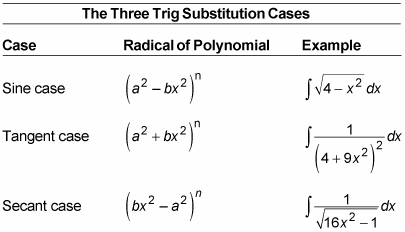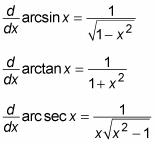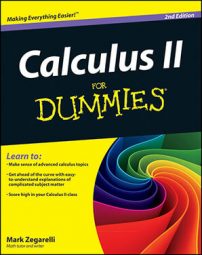Trig substitution allows you to integrate a whole slew of functions that you can’t integrate otherwise. These functions have a special, uniquely scary look about them and are variations on these three themes:
(a2 – bx2)n
(a2 + bx2)n
(bx2 – a2)n
Trig substitution is most useful when n is
or a negative number — that is, for hairy square roots and polynomials in the denominator of a fraction. When n is a positive integer, your best bet is to express the function as a polynomial and integrate it.
Trig substitution is useful for integrating functions that contain three very recognizable types of polynomials in either the numerator or denominator. The table lists the three cases that you need to know about.

The first step to trig substitution is being able to recognize and distinguish these three cases when you see them.
Knowing the formulas for differentiating the inverse trig functions can help you remember these cases:

Note that the differentiation formula for arcsin x contains a polynomial that looks like the sine case: a constant minus x2. The formula for arctan x contains a polynomial that looks like the tangent case: a constant plus x2. And the formula for arcsec x contains a polynomial that looks like the secant case: x2 minus a constant. So if you already know these formulas, you don’t have to memorize any additional information.

